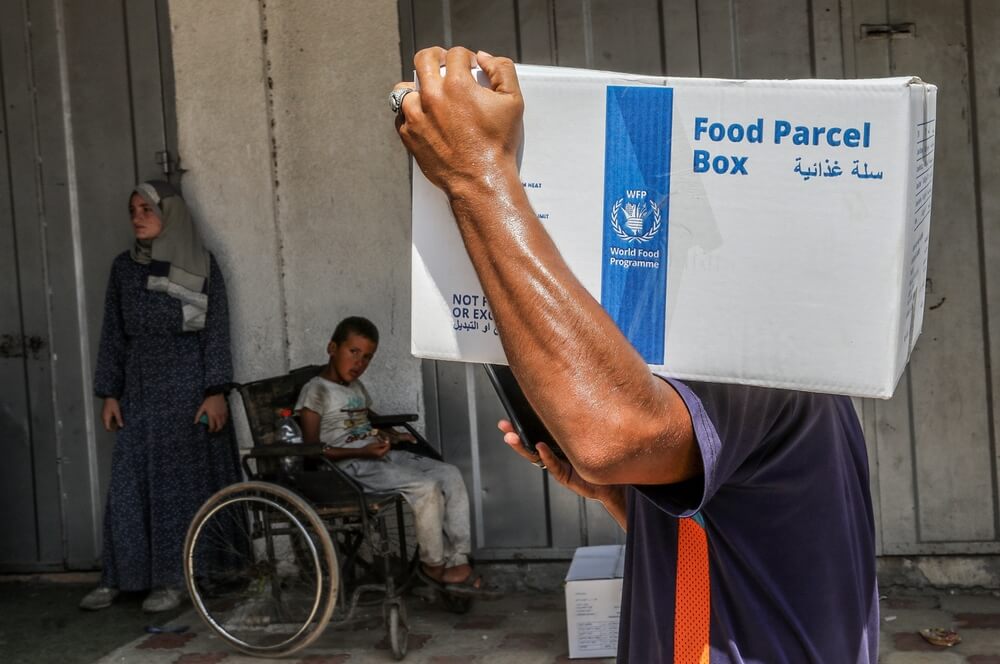USAID was officially wound down at the start of this month, but even this was not enough for Donald Trump, who ordered the cancellation of $4.9 billion in foreign aid spending that had already been approved by Congress.
The president made use of a little-known legal mechanism known as a pocket rescission to bypass lawmakers and their oversight of spending in a move that many critics saw as yet another test of the limits of presidential authority.
“Within the foreign aid debate, no one in Washington objected to emergency relief after hurricanes, earthquakes, or similar natural disasters,” according to Michael Rubin, a fellow at the right-wing American Enterprise Institute think tank. “What fiscal hawks did object to was subsidising the failures of governments to build their own infrastructure.”
But this argument will do little to dispel the widespread alarm over aid cuts not just by the US but many other Western governments, given their massive impact that is already being felt in death and disease numbers.
Those with the least will pay for the cuts
Humanitarians are scrambling to limit the damage, but it is likely that those people with the least will pay for the cuts with rising misery and greater instability.
Unless the USAID cuts are reversed, likely impossible in today’s political climate, around 14 million people will die by 2030, according to a recent study in The Lancet.
Spending by the US agency between 2001 and 2021 saved about 92 million lives, 30 million of them children, said the study.
More than 80% of US aid spending has been eliminated, with the remaining aid projects folded into the State Department. Trump’s latest cuts include $3.2 billion in development assistance grants, $520 million for the United Nations, $838 million for international peacekeeping operations, and $322 million for democracy projects.
Official development assistance (ODA) is set to fall by more than $31 billion this year after cuts by the two largest donors - the US and Germany
Cuts by other governments have also been substantial. Official development assistance (ODA) is set to fall by more than $31 billion this year after cuts by the two largest donors - the US and Germany, says Donor Tracker, an independent NGO.
“Across 12 other markets, including France and the UK, ODA is expected to decline due to a combination of budget cuts, reduced in-donor refugee costs, and reduced GDP growth,” it says.
“Small expected ODA increases in three markets, namely Japan, South Korea, and Italy, will not be able to cover the losses.”
A mixture of spite and incompetence
Critics say a mixture of spite and incompetence is compounding the effects of winding down USAID, whose property is being left to languish, sold off at fire-sale prices, or even being destroyed, The Atlantic magazine reported on 26 August.
Former USAID staffers and other aid groups are trying to distribute some of the potentially life-saving supplies, which include defibrillators, nutritional support and computers.
It remains to be seen if they will be able to save $10 million worth of contraceptive pills, intrauterine devices and hormonal implants that the US has ordered to be destroyed in France. The estimated cost of their destruction is $167,000.
The medical agency Médecins Sans Frontières has offered support to deliver the contraceptives to women and girls in countries where they are desperately needed
The contraceptive supplies are currently stored in Belgium, which is engaged in diplomatic efforts with the US. “All possible avenues are being explored to prevent destruction, including temporary relocation,” a spokesperson for the Belgian Ministry of Foreign Affairs told El Pais newspaper last week.
In France, a citizen petition was sent to the National Assembly urging “the government to be questioned on this issue and to do everything possible to prevent this incineration on French and European soil.”
The medical agency Médecins Sans Frontières has offered support to deliver the contraceptives to women and girls in countries where they are desperately needed. “The U.S. government’s decision to incinerate millions of dollars’ worth of contraceptives is an intentionally reckless and harmful act against women and girls everywhere,” it said in a statement.
Trade-off between aid and security
Meanwhile, the impacts of the aid cuts are already being felt in dramatic fashion in several countries. At least four countries - Nigeria, Kenya, Somalia and South Sudan - are expected to run out of ready-to-use therapeutic food (RUTF) over the next three months, Save the Children warned on 28 August.
 The collapse in nutrition funding globally is predicted to cut treatment for 15.6 million people across 18 countries
The collapse in nutrition funding globally is predicted to cut treatment for 15.6 million people across 18 countries
The collapse in nutrition funding globally is predicted to cut treatment for 15.6 million people across 18 countries, including over 2.3 million severely malnourished children, in 2025, the charity said.
The dismantling of USAID has disrupted the global supply chain that provides RUTF, according to a recent New York Times investigation.
A complete six-week treatment of RUTF for a severely malnourished child runs to less than $45 and USAID had funded about half of the world’s supply, but thousands of children are now at risk of dying.
But Rubio and other “fiscal hawks” continue to insist that US aid cuts will not lead to preventable deaths.
While aid experts discuss how best to reform the aid system and move forward, death, poverty and hunger will rise along with insecurity. For example, Islamic State West Africa could exploit food shortages to spur recruitment.
“The immediate toll may be confined to the peripheries of Western strategic interests, but they have a propensity to transform the global threat landscape ‘down the line’, exposing a fallacious trade-off between aid and security,” said a recent Royal United Services Institute commentary.